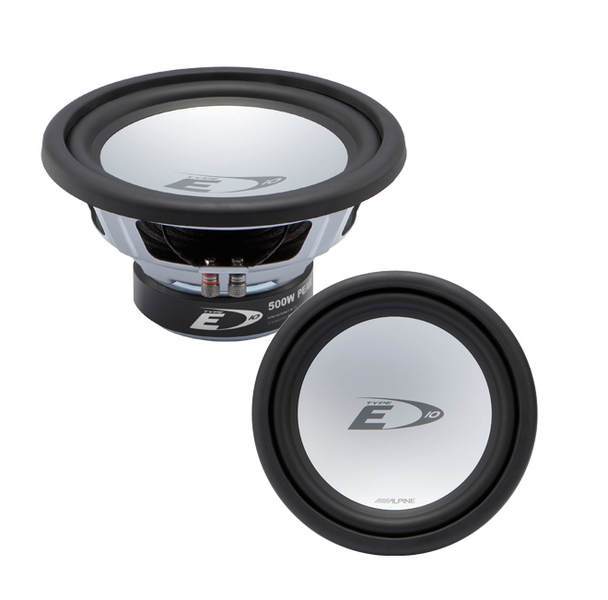Nonlinear distortions - if all the participants had them at the same level (even if only one and a half times, maybe), the question would not be worth raising at all. In short - the best result according to Ph.D.
Alpine SWE-1043E
The diffuser of the Alpine subwoofer is composite, and the set of materials is quite traditional (if we can talk about traditions in such a design): on top of a parabolic segment made of polypropylene, under it is a full-size cone made of long-fiber cellulose. The basket is muffled thoroughly, you can't say anything. The relatively modest axial bore (17mm) suggests that the voice coil is also small here. The idea was confirmed, the coil is, indeed, 1.5-inch. At the same time, the magnet with dimensions of 132 x 28 mm looks quite solid. A thin (16 mm) hanger surrounds a tall, soft o-ring. On top of it, a thin rubber rim without holes is put on, which allows you to completely hide the fasteners - a part, as I understand it, is inexpensive, but useful. Eight ventilation holes in the case are directed downward, and the air current simultaneously cools the magnet from the outside. The centering washer has a progressive corrugation. Screw terminals. The wires to the voice coil are connected according to the first method (that is, it is still in use on land), each of them is stitched into the cone twice.
The recommended designs were somewhat surprising. Perhaps their compilers remember that some Alpine subwoofers do indeed operate in very small volumes, and made recommendations more based on memories. But this particular subwoofer, with the highest Vas value in this test, does not allow microvolumes. From the factory recommendations, therefore, we immediately sweep aside the options for ZYA in 15 liters and FI in 28. According to the measurements, the suspension turned out to be even softer than it was intended, although the quality factor came out more. At the same time, the optimal volume of the PS was a value slightly less than the maximum proposed by the Japanese, 21 liters, and the FI had to even be “inflated” with respect to the same recommendations; at low settings, it behaves excellently in all respects, except for compactness.
The force factor turned out to be unexpectedly low, 10.2 T m for such a magnet - this is not for the Guinness Book. However, the moving system here is also very light (74.5 g is the second result from the bottom), so everything is in order with the reference sensitivity (also the second result, only from the top). The acoustic gain in the box with the FI is not so high, however, even this was enough for Alpine to take the first or second places in terms of the normalized sensitivity. Nonlinear distortions - if all the participants had them at the same level (even if only one and a half times, maybe), the question would not be worth raising at all. In short - the best result according to Ph.D. Minuses? Let's try to find.













.jpg)



0 Comments